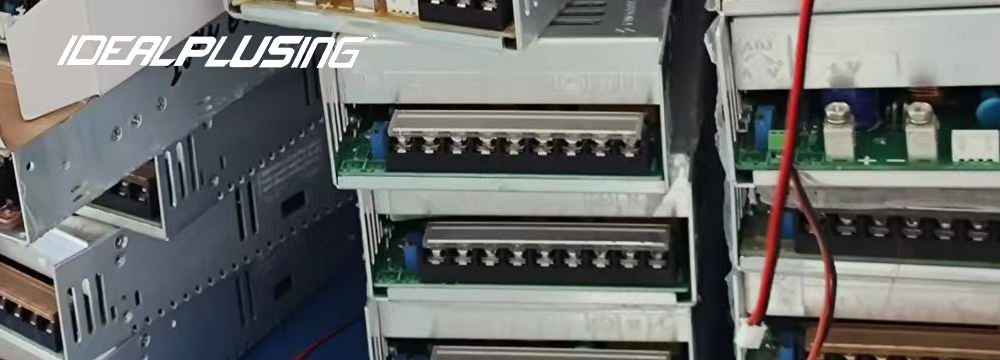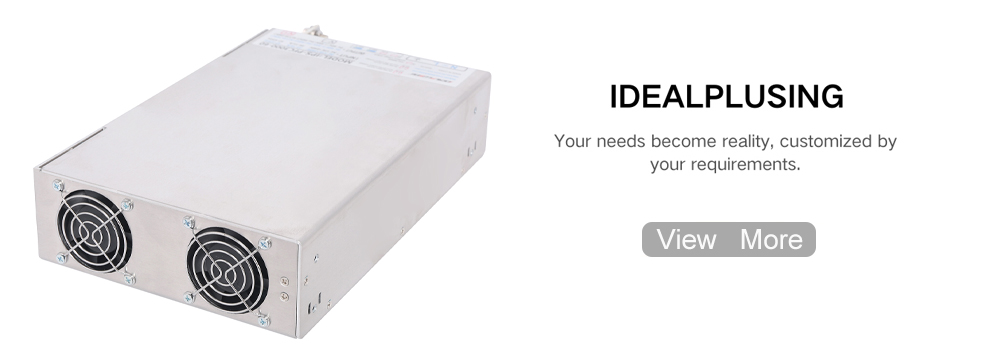Communication switching power supply is the infrastructure of communication. Once a failure occurs, it will lead to very serious consequences. The statistical results of our practical work have confirmed that the main cause of data loss, hardware failure and downtime is the failure of the communication switching power supply system.
The change of the working environment temperature of the power supply room is closely related to the working stability and service life of the switching power supply. Therefore, the power supply chooses a suitable cooling method to ensure the reliable use of the communication power supply.
 The influence of temperature on the performance and life of the communication switching power supply
The influence of temperature on the performance and life of the communication switching power supply
The main component of the communication switching power supply is the high-frequency switching rectifier, which has gradually developed and matured with the development of power electronics theory and technology and power electronic devices.
The rectifier using soft switching technology has lower power consumption, lower temperature, and a significant decrease in volume and weight, and the overall quality and reliability are constantly improving.
However, every time the ambient temperature rises by 10°C, the life of the main power components is reduced by 50%.
The reason for such a rapid decline in life is due to temperature changes. Fatigue failure caused by various microscopic and macroscopic mechanical stress concentrations, ferromagnetic materials and other components will germinate various types of microscopic internal defects under the continuous action of alternating stress during operation.
Therefore, ensuring effective heat dissipation of equipment is a necessary condition to ensure the reliability and life of the equipment.
The relationship between working temperature and the reliability and life of power electronic components
The power supply is an electric energy conversion device. During the conversion process, it needs to consume some electric energy, which is converted into heat and released. The working stability and aging speed of electronic components are closely related to the ambient temperature. Power electronic components are composed of a variety of semiconductor materials.
Since the loss of power components during operation is dissipated by their own heat, the thermal cycle of multiple materials with different expansion coefficients will cause very significant stress, and may even cause instantaneous fracture and component failure.
If the power component works under abnormal temperature conditions for a long time, fatigue that will lead to fracture will be caused. Since semiconductors have thermal fatigue life, this requires that they should work in a relatively stable and low temperature range.
At the same time, rapid changes in temperature will temporarily produce semiconductor temperature differences, which will produce thermal stress and thermal shock. The components are subjected to thermal-mechanical stress.
When the temperature difference is too large, stress cracks will occur in different material parts of the components. The components fail prematurely. This also requires that power components should work in a relatively stable operating temperature range, reduce rapid temperature changes, eliminate the impact of thermal stress shock, and ensure long-term and reliable operation of the components.
The influence of working temperature on the insulation capacity of the transformer
After the primary winding of the transformer is energized, the magnetic flux generated by the coil flows in the iron core. Since the iron core itself is a conductor, an induced potential will be generated on the plane perpendicular to the magnetic field line, forming a closed loop on the cross section of the iron core and generating current, which is called "eddy current". This "eddy current" increases the loss of the transformer, and causes the iron core of the transformer to heat up and the temperature rise of the transformer to increase. The loss generated by the "eddy current" is called "iron loss". In addition, the copper wire used to wind the transformer has resistance. When the current flows through, this resistance will consume a certain amount of power. This part of the loss is converted into heat and consumed, which is called "copper loss". Therefore, iron loss and copper loss are the main reasons for the temperature rise of the transformer.
As the operating temperature of the transformer rises, the coil will inevitably age. When its insulation performance decreases, the ability to resist the impact of the main power will be weakened. At this time, if there is a lightning strike or a main power surge, the high reverse voltage appearing in the primary of the transformer will break down the transformer, causing the power supply to fail. At the same time, there is also the risk of high voltage entering the main communication equipment in series, forming the main equipment damage.
The influence of cooling method on the working temperature of power supply
The heat dissipation of power supply generally adopts two methods: direct conduction and convection conduction. Direct heat conduction is the transfer of heat energy from the high temperature end to the low temperature end along the object, and its heat conduction capacity is stable.
Convection conduction is the process of liquid or gas making the temperature tend to be uniform through rotation. Since convection conduction involves the power process, the cooling is relatively smooth.
The radiator is installed on the metal radiator, and the energy is transferred by high and low energy bodies by squeezing the hot surface.
The energy that can be radiated by the large area of heat sink is not much. This heat conduction method is called natural cooling, which has a long delay time for heat dissipation. Heat transfer Q = KA△t (K heat transfer coefficient, A heat transfer area, △t temperature difference).
If the indoor ambient temperature is high, the absolute value of △t is small, and the heat dissipation performance of this heat transfer method will be greatly reduced.
Adding a fan to the power supply quickly discharges the heat accumulated in the energy conversion out of the power supply.
The continuous air supply of the fan to the heat sink can be regarded as convection transfer of energy. It is called fan cooling, and the delay time of this heat dissipation method is short and long.
Heat dissipation Q = Km△t (K is the heat transfer coefficient, m is the heat transfer air mass, △t is the temperature difference).
Once the fan speed decreases or stops, the m value will decrease rapidly, and the heat accumulated in the power supply will be difficult to dissipate, which will greatly increase the aging speed of electronic components such as capacitors and transformers in the power supply and affect the stability of its output quality, eventually leading to component burning and equipment failure.






